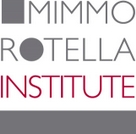Main menu:
ACTIVITIES > EXHIBITIONS
MIMMO ROTELLA
curated by Antonella Soldaini
6 February – 24 March 2015
ROBILANT+VOENA are pleased to present an exhibition of Italian artist MIMMO ROTELLA, opening 5 February in their London gallery. Investigating over thirty years of the artist’s long career, the exhibition, curated by Antonella Soldaini, Director of the Mimmo Rotella Institute, will focus on Rotella’s fascination and experimentation with materials and innovative techniques, and bring to light the multiple ways Rotella manipulated material to achieve a radical conceptual framework which for him extended from the studio into society.
Rotella came of age in Rome during the post-war period and established his place within a cultural movement recognised internationally due to the presence in the city of artists such as Alberto Burri, Ettore Colla, Carla Accardi and Cy Twombly. He invented the décollage technique in 1953/4, and remained one of the key artists working within this practice for the rest of his life. He appropriated cinema and advertising posters from city walls and mined them for meaning by tearing, scarring and excavating their layers, initially leaving an abstract patterning before moving to the more figurative use of subject matter. The artist was decisively in line with his time: his revolutionary gesture of tearing carried out a need for a more direct contact with life and the reality by which he was surrounded. Furthermore, his experimentation with material, technique and concept fulfilled an avant-garde and political undertone: ‘Ripping posters off walls is the only revenge, the only protest against a society that has lost its taste for change and astounding transformations. I glue the posters, then tear them: new, unpredictable forms are created. I’ve abandoned the easel to make this process...’ (M. Rotella, catalogue of 1957 exhibition at Galleria d’Arte Selecta.) As well as using the colourful and vibrant surface of posters in the décollage works, Rotella also utilised the reverse in the retro d’affiches, usually leaving them untouched, hence the physical marks of the walls – plaster, dust, glue and the like were left in evidence, creating a crater-like surface eluding easy definition of material. The exhibition will include seminal early works from the mid-50s to the early 1960s, exemplifying this vital period.
In the 1960s Rotella began working with other innovative techniques such as his photographic reportages and artypos. Both begin with photo-mechanical processes: in the reportages the image is projected on a canvas treated with photographic emulsion in order to fix it; while the artypos are superimposed printing proofs. These two techniques are similar in their results to the experiments in merging photography with painting which both Rauschenberg and Warhol were involved with during that period. While the photographic reportages are characterized by mostly black and white pictures and in some cases by political subjects, the artypos are impregnated with vivid colour, with several layers of flat superimposed advertising images producing an effect that is conceptually linked to the décollages yet visually very different.
Rotella’s dynamic experimentation with material and process continued throughout the 1980s and 90s with his blanks series - collages on canvas or zinc with monochrome pieces of paper covering the greater proportion of the surface. With the blanks Rotella seems to have wished to return to the essential starting point of the artistic process: they are characterised by and loaded with an inscrutable emotive intensity. Parallel to the blanks, the artist also developed his sovrapitture, executed variously on canvas or zinc sheets, by applying acrylic paint on to the décollages. In these works the zinc assumes a significant role beyond that of merely a supporting structure, and becomes instead an integral feature of the work itself. Lastly, additional examples of his late décollage works from the early 2000s will reveal Rotella’s consistent adherence to the process which remained his most defining.
A lavishly illustrated catalogue (in English, with Italian translation) of over a hundred pages will be published on the occasion of the exhibition, with text by Antonella Soldaini, and a chronology mapping Rotella’s entire career.
ROBILANT + VOENA 38 Dover Street, London
_______________________________
CATALOGUE

Antonella Soldaini
MIMMO ROTELLA
Skira, Milan
_______________________________
_______________________________

